06:43
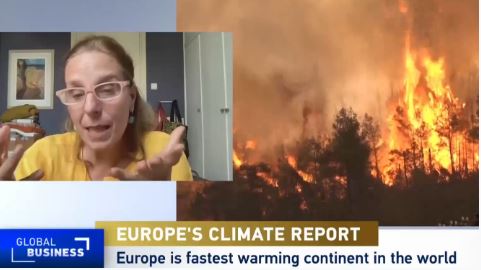
Europe is now the fastest warming continent of the world – warming at twice the global average since the 1980s.
This terrifying fact was published today in The State of the Climate in Europe 2022. A report compiled by the World Meteorological Organisation (WMO) and produced jointly with the European Union's Copernicus Climate Change Service, it should see European leaders sitting up and taking notice.
Last year in Europe was 2.3 degrees Celsius above the pre-industrial baseline. As the Paris Agreement on climate change warned, temperature rises over 2 degrees could bring catastrophic and potentially irreversible impacts. The consequences on the average European's quality of life are stark – threatening the socio-economic fabric of the continent and its delicate ecosystems with extreme heat, drought and wildfires.
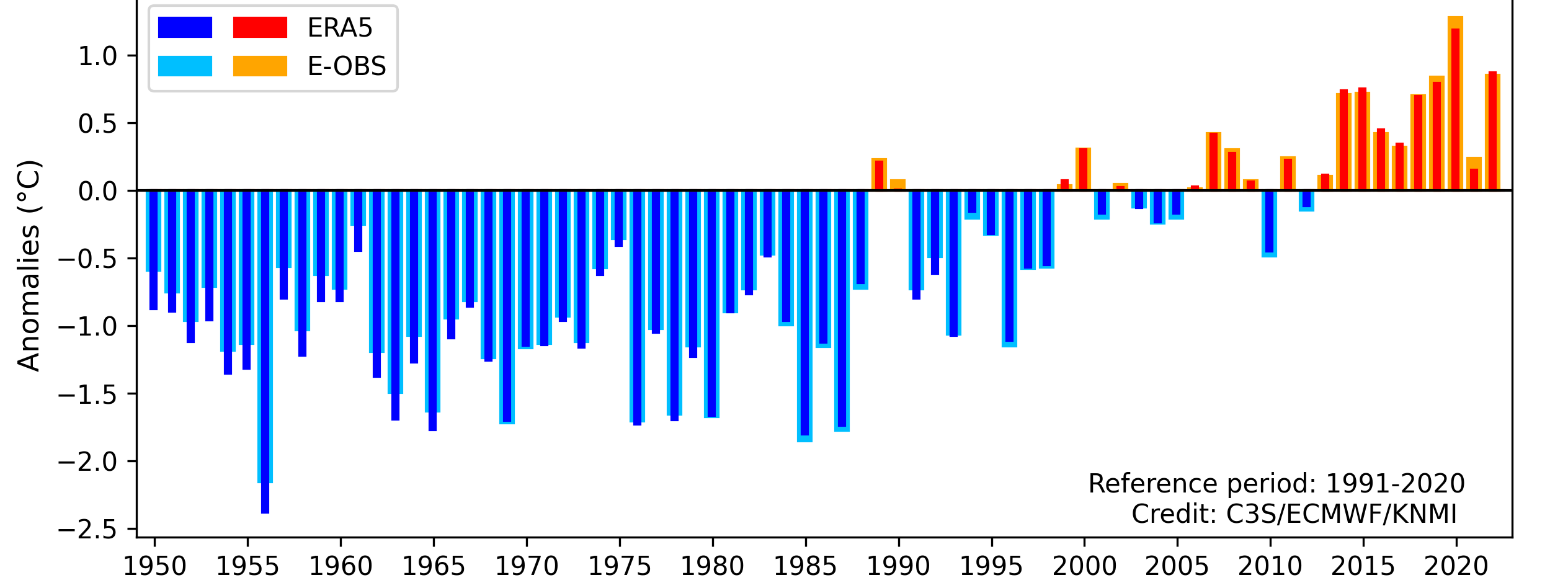
Europe's annual temperature abnormalities. /Copernicus, WMO
Europe's annual temperature abnormalities. /Copernicus, WMO
"The record-breaking heat stress that Europeans experienced in 2022 was one of the main drivers of weather-related excess deaths in Europe," said Carlo Buontempo, Director of Copernicus Climate Change Service.
"Unfortunately, this cannot be considered a one-off occurrence or an oddity of the climate. Our current understanding of the climate system and its evolution informs us that these kinds of events are part of a pattern that will make heat stress extremes more frequent and more intense across the region."
The report also claimed that meteorological, hydrological and climate-related hazards in Europe in 2022 were responsible for at least 16,365 reported fatalities. The economic consequences from disasters were mostly flood- and storm-related – with an economic bill in excess of $2 billion.
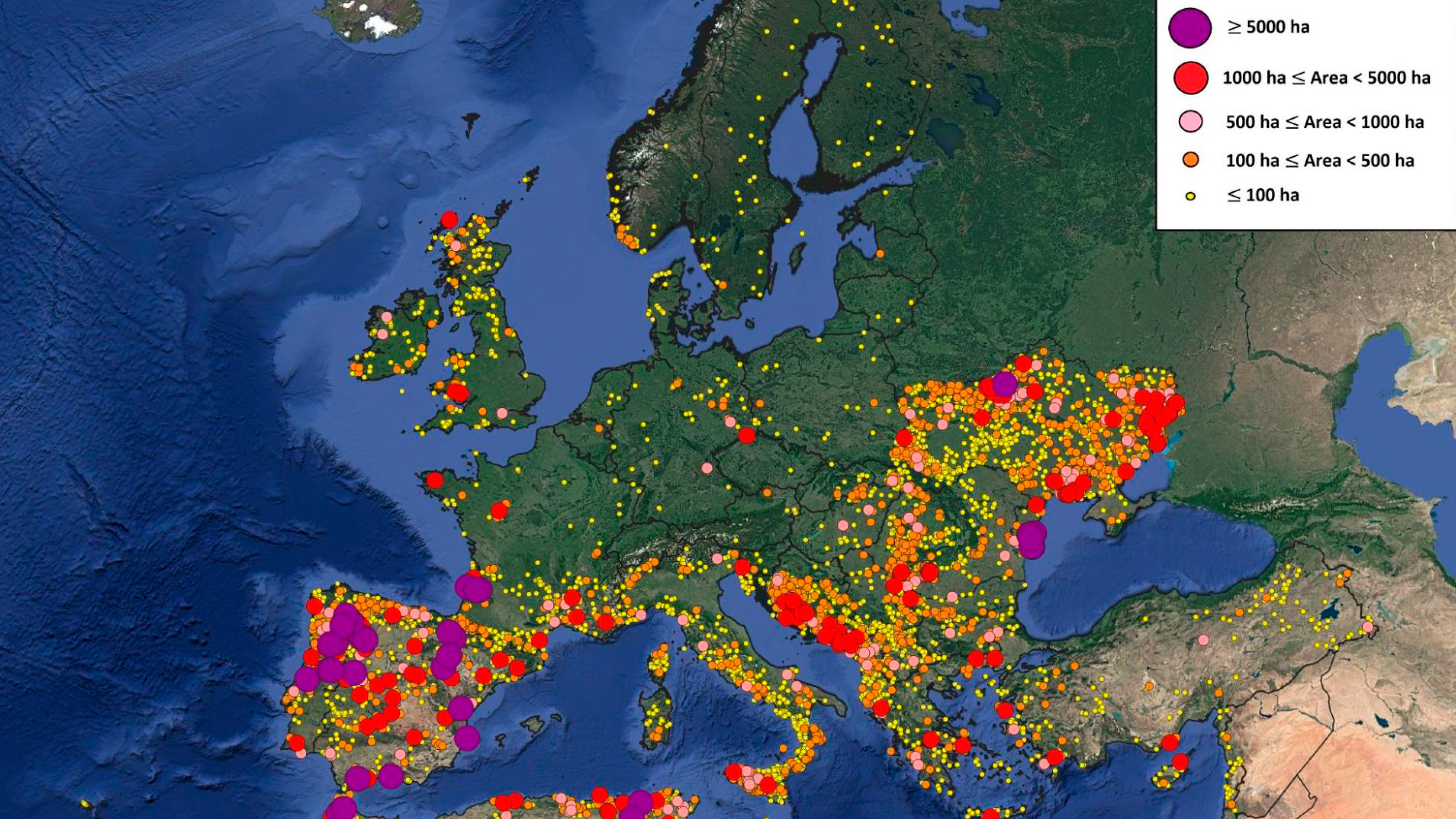
2022 burnt areas reported by EFFIS. /Copernicus, WMO
2022 burnt areas reported by EFFIS. /Copernicus, WMO
Hazardous heat
Heatwaves across Europe in 2022 led to more than 16,000 excess deaths. Heat records were broken in Belgium, France, Germany, Ireland, Italy, Luxembourg, Portugal, Spain, Switzerland and the UK.
"Summer was the hottest ever recorded: the high temperatures exacerbated the severe and widespread drought conditions, fuelled violent wildfires that resulted in the second largest burnt area on record, and led to thousands of heat-associated excess deaths," said WMO Secretary-General Jukka Petteri Taalas.
Rainfall was also below average across much of the region – making 2022 the fourth consecutive driest year on the Iberian Peninsula, and the third consecutive dry year in the Alps and Pyrenees.
France, UK and parts of Belgium has their driest years since 1976 while Spain's water reserve decreased to 41.9 percent of its total capacity.
High temperatures and a lack of snow also caused devastation across Europe's glaciers – the Alps suffered an average reduction in ice thickness of 34 meters, with implications from landslides and avalanches to loss of hydroelectric energy across the region.
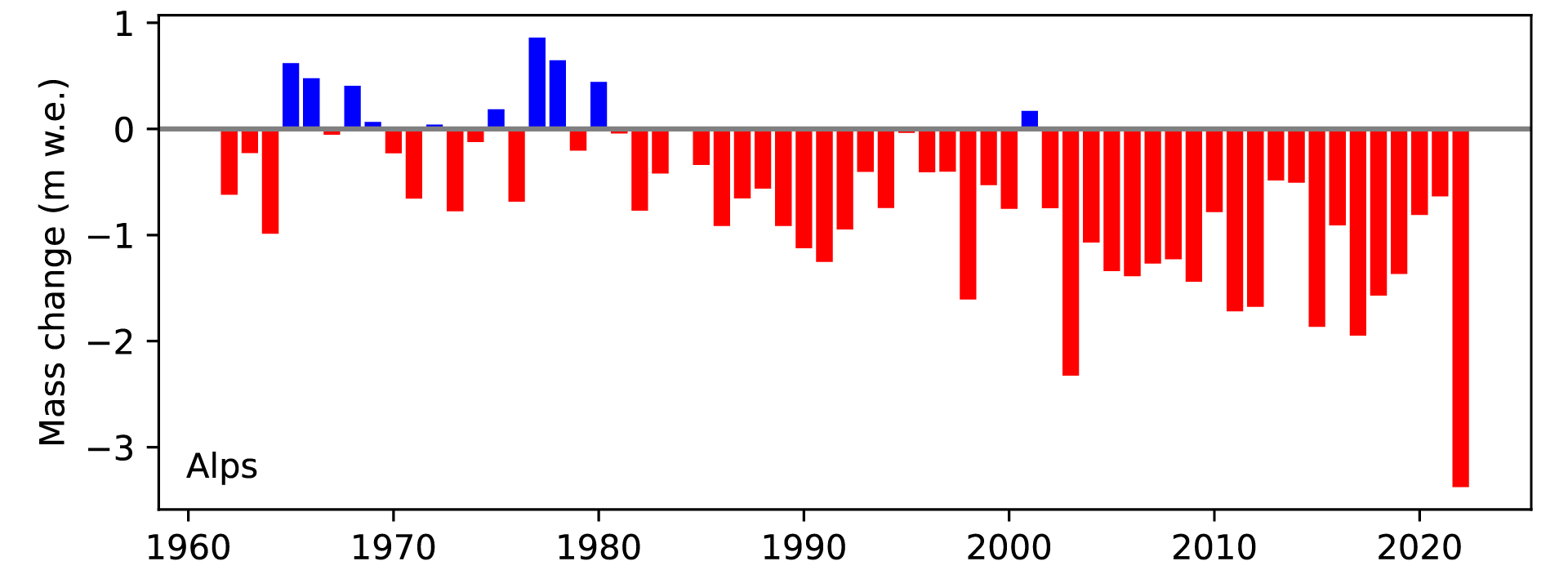
Ice mass change in The Alps. /Copernicus, WMO
Ice mass change in The Alps. /Copernicus, WMO
Dangerous waters
Sea surface temperatures around Europe also reached new highs, accompanied by marine heatwaves. Glacier melt was unprecedented.
Between 1972 and 2021, the Greenland Ice Sheet lost around 5,000 gigatonnes of ice, adding nearly 1.5 centimeters to global sea-levels – and this loss is continuing.
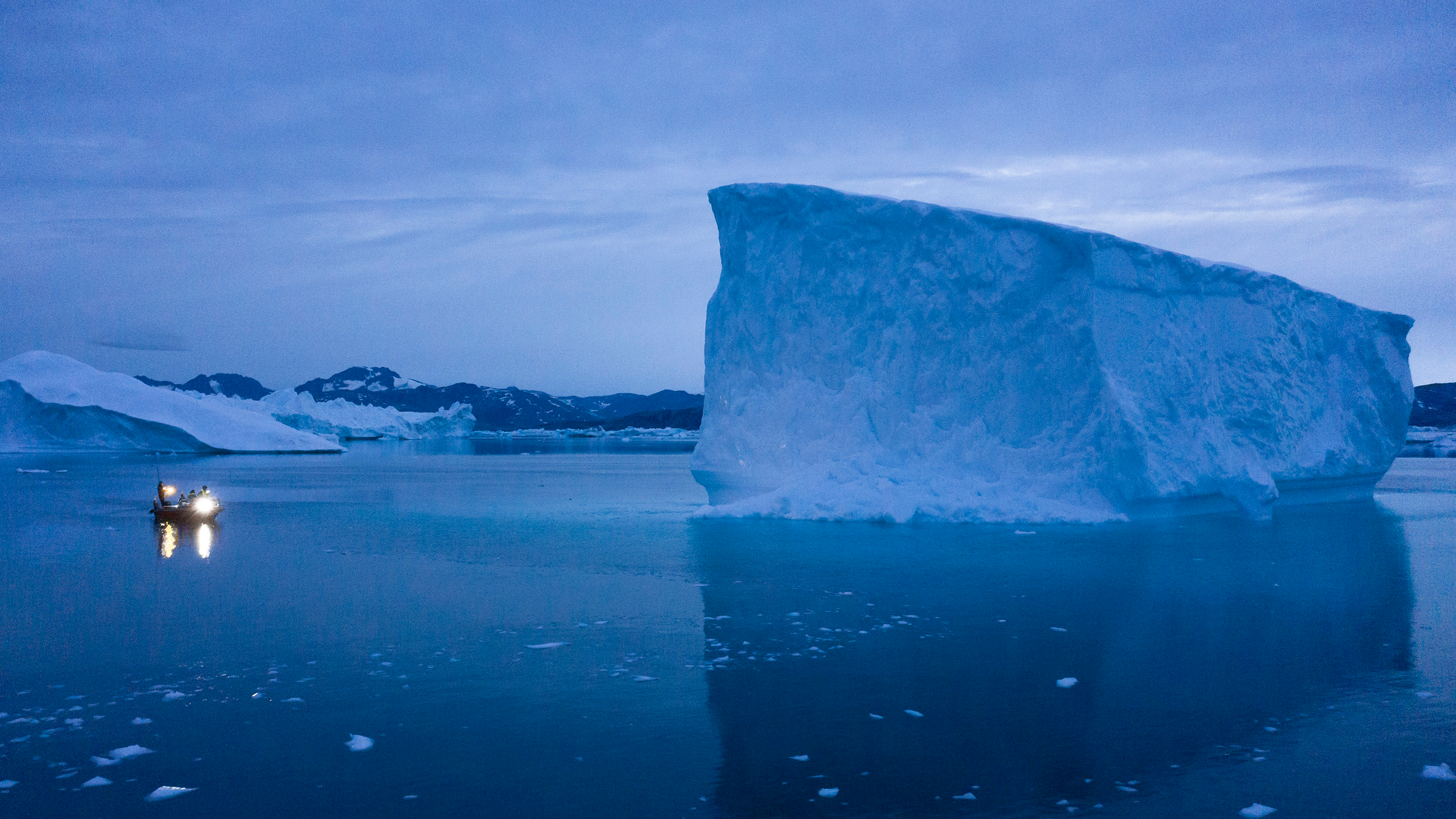
Melting icebergs are one visible sign of global warming. /Felipe Dana/AP Photo
Melting icebergs are one visible sign of global warming. /Felipe Dana/AP Photo
Added to this 2022 saw average sea surface temperatures across the North Atlantic at the warmest on record with seas affected by extreme marine heatwaves. In the eastern Mediterranean Sea, the Baltic and Black Seas, and the southern Arctic sea, temperatures rose at three times the global average.
These marine heatwaves lead to migration of species and mass extinctions, arrival of invasive species, and disruption of ecosystems and biodiversity. It seems European nations need to start adapting to this new reality.
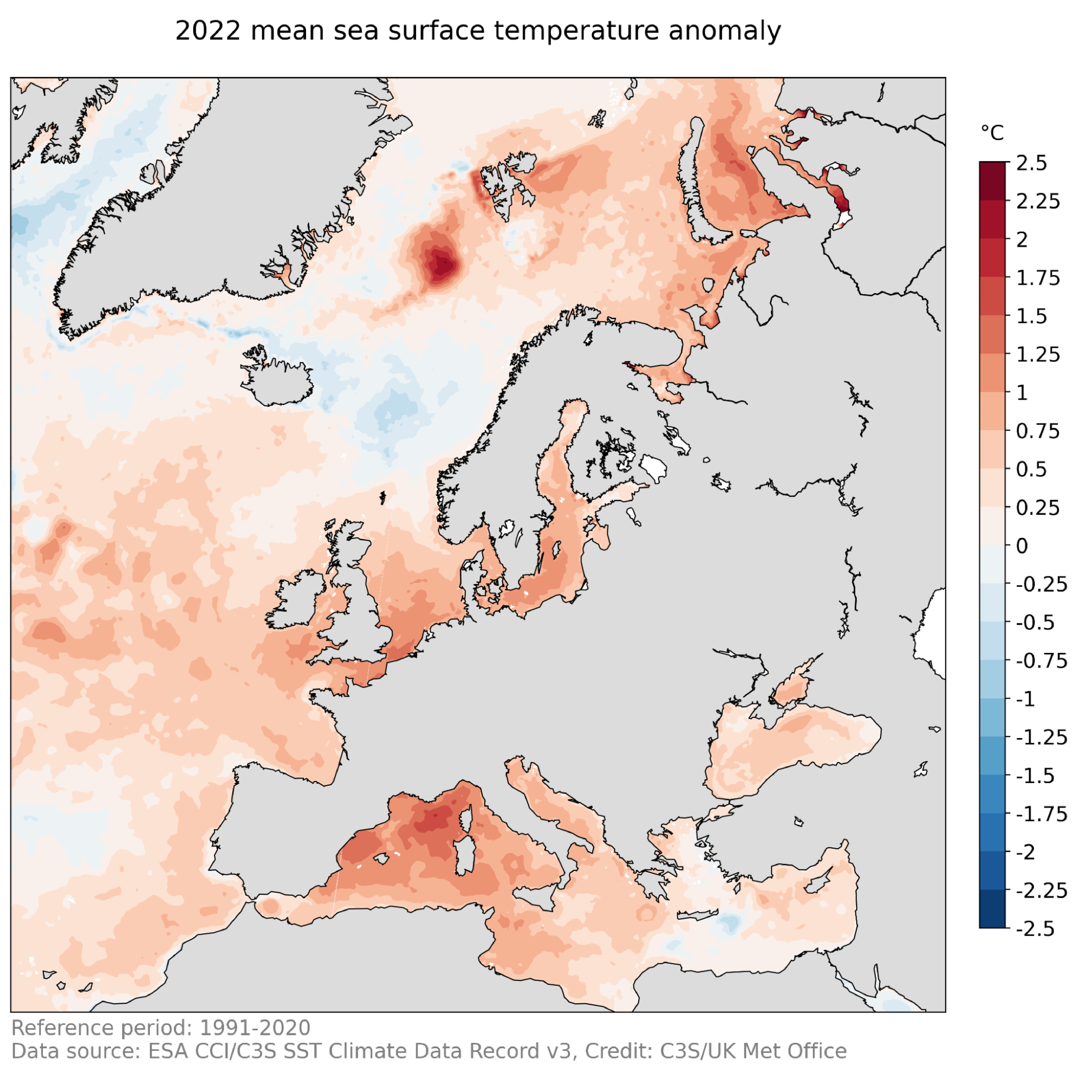
Warming seas are another huge worry. /UK Met office
Warming seas are another huge worry. /UK Met office
Sliver of hope
One positive note in the report was that in 2022, renewable energy generated more electricity than polluting fossil fuels for the first time. Wind and solar power generated 22.3 percent of European Union electricity in 2022, overtaking fossil fuel (20 percent).
"For the first time, more electricity was generated by wind and solar than by fossil fuel in the EU. Increasing use of renewables and low-carbon energy sources is crucial to reduce dependence on fossil fuels," said WMO Secretary-General Prof. Petteri Taalas. "Climate services play a key role in ensuring the resilience of energy systems to climate-related shocks, in planning operations, and in informing measures to increase energy efficiency," he said.
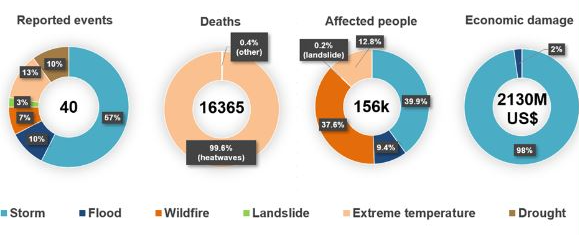
The figures are startling. /WMO
The figures are startling. /WMO
The report has a special focus on energy and highlights how more extreme weather, including intense heat, heavy precipitation and droughts have growing implications for the supply, demand and infrastructure of Europe's energy system.
The news is worse for nuclear energy with interruptions to nuclear power operations due to adverse climatic conditions increasing over the past three decades.
In 2021, reported weather-related production losses accounted for approximately 0.33 percent of global nuclear energy generation. Low river flows and increasing temperatures and heat extremes are the major factors.
This problem is set to accelerate in the long-term and southern Europe could see some of the largest global percentage increases in extreme temperatures above 40 degrees Celsius and in the number of consecutive dry days. Nuclear plant sites in southern Europe should start to adapt to these changing conditions now and some plants may have to cease operations.

Subscribe to Storyboard: A weekly newsletter bringing you the best of CGTN every Friday